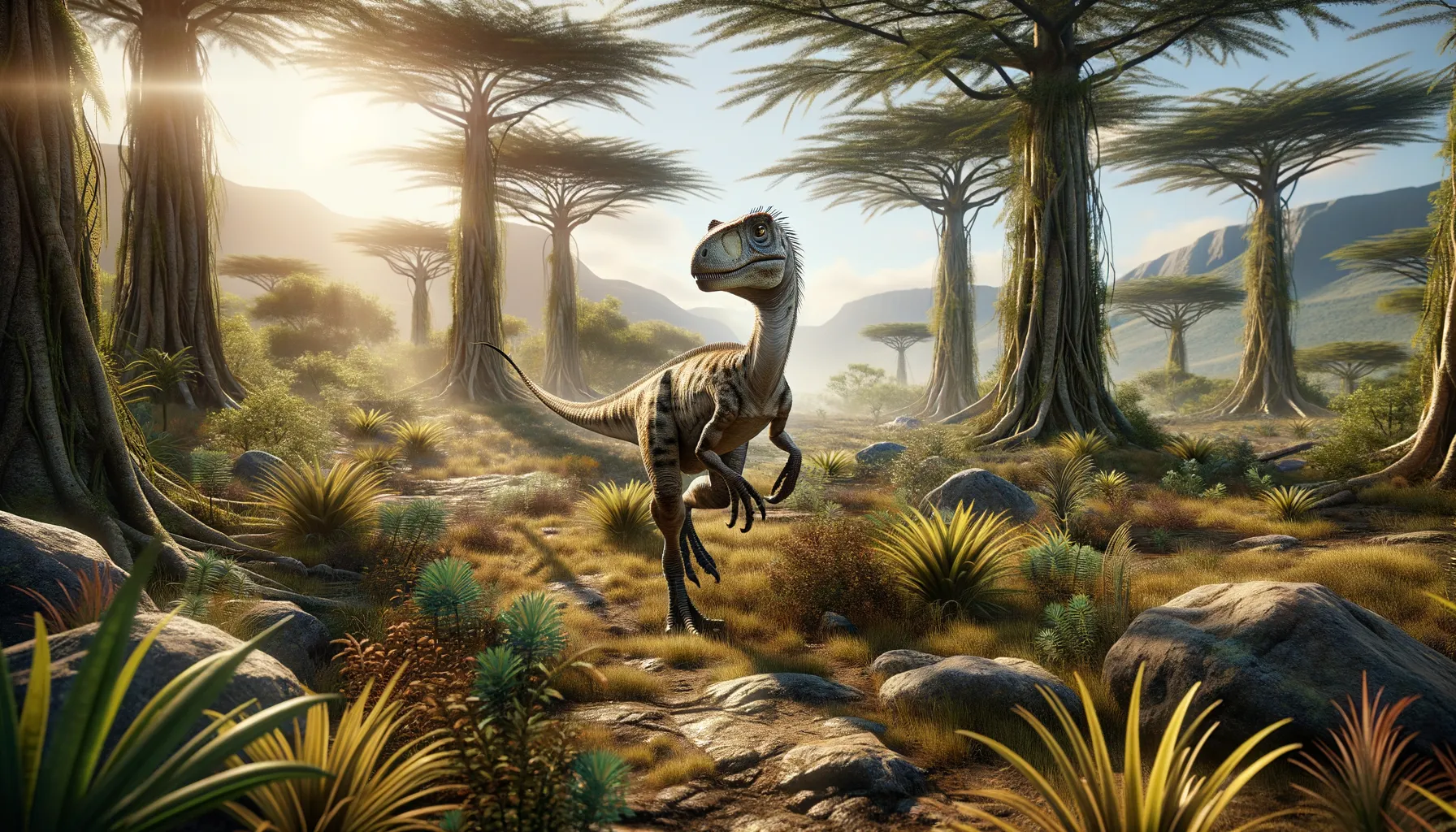
Philovenator
Swift hunter of the ancient Cretaceous scene!
Period
Cretaceous
Length
Measured around 1.5 meters in length.
Height
Stood about 0.5 meters tall at the hips.
Weight
Weighed approximately 2 to 3 kilograms.
Philovenator is a small, bird-like theropod dinosaur from the Late Cretaceous period. Predominantly found in what is now Inner Mongolia, it is known for its agile body structure, hinting at a swift and nimble lifestyle. This dinosaur shares characteristics with early birds, providing valuable insight into the evolutionary pathways of modern avian species. With its light bones and sharp claws, it was likely well-adapted to a predatory lifestyle in the dense vegetation of its time.
Diet
Philovenator was likely an insectivore, dining on small insects and possibly small vertebrates. Its sharp claws and lightweight structure suggest it could catch fast-moving prey with relative ease.
Hunting
This dinosaur was likely an active hunter, utilizing its agility to swiftly capture its prey. The small size and quick speed would have enabled it to sneak through the undergrowth and surprise its food sources.
Environmental challenges
Philovenator lived in a time of significant ecological change, with fluctuating temperatures and varying vegetation types. The dense forests would have required adaptations for quick maneuvers and climbing abilities to avoid larger predators. Competition for food was likely high, necessitating efficient hunting strategies.
Speed
Agile and swift, capable of fast maneuvers.
Lifespan
Estimated to have lived around 10-20 years.
First discovery
Discovered in Inner Mongolia, China in 2009.
Fun Facts
- Philovenator is a small dinosaur that belongs to the group of theropods, which are known for being mostly carnivorous.
- It lived during the Late Cretaceous period, around 75 million years ago.
- Philovenator's fossils were discovered in what is now Inner Mongolia, China.
- Despite its fearsome name, Philovenator was actually quite small, about the size of a turkey.
- Its name, Philovenator, means 'lover of hunting', reflecting its predatory nature.
- Philovenator likely had feathers, similar to many other theropods, and was possibly warm-blooded.
- This dinosaur had a keen sense of sight and agility, making it an effective hunter of small prey.
Growth and Development
Philovenator hatched from eggs and likely grew rapidly to avoid predation. Juveniles probably had to fend for themselves early, developing skills for hunting and survival in their challenging environment. Its growth rate might have been typical of other small theropods, balancing between speed and strength.
Habitat
This dinosaur inhabited dense forested areas of what is now Inner Mongolia, with abundant plant life and a diverse ecosystem. The region offered plenty of cover for stealthy hunting and protection from larger predators. Seasonal changes may have influenced resource availability, requiring adaptability in its lifestyle.
Interaction with other species
As a small carnivore, Philovenator would have had to compete with similar-sized dinosaurs and mammals for food. It might have served as prey for larger theropods, necessitating stealth and agility for survival. Mutualistic relationships, such as those with birds helping in pest removal, could have been beneficial.
Natural lifespan
Philovenator's natural lifespan ranged from 10 to 20 years.
Reproduction
Philovenator reproduced through eggs, with nests likely hidden to protect against predators. Parenting behavior might have included guarding nests or even some form of communal nesting among species. Hatchlings were probably independent quickly, needing to adapt to survival pressures.
Social behaviour
Philovenator might have displayed some social behaviors, such as hunting in pairs to increase efficiency or avoid threats. Its small size would have encouraged communication, possibly through vocalizations or visual signals, to coordinate efforts or warn of danger.
Fossil locations
Philovenator fossils have primarily been found in the Bayan Mandahu region of Inner Mongolia, China. The discovery in 2009 added to our understanding of the diversity of life in the Late Cretaceous. These sites continue to yield important information about the species and its environment.
